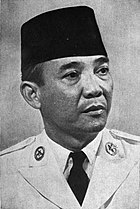
Wide of 25 ha, RPH Patuha, BKPH Ciwidey, KPH Bandung South, Natural Countryside of Endah, Kecam, Atan Sand of Jambu, Sub-Province of Bandung. This Place lay in height 2434 dpl m, its hilly sloping public square configuraton until. Air temperature around 8 – 22 0 C. the source of depended existing water of the rains. Dampness 90%, while annual rainfall noted by between 3743 – 4043 mm / year.
Area Potensions
This Tours represent daily traveling which have view of nature in the form of natural forest and crater have fire. Daily tours able to be conducted by crosscountry and mount hiking. Plant found on this areas that is : beam – beam, saliara, kingkilaban, kirinyuh, flower, euca lyptus, and fir-tree of rasamala. Animal which there are in this areas that is : sanca, owl, surili, tiger, wolf.




Mount of Patuha by society of Ciwidey considered to be eldest mount. But Patuha it is said come from town Mr. is Old glaze, so that local society oftentimes mentioning it with Mount Glaze. Lebioh from a century ago, top of the mountain of Patuha assumed by anker by local society so that not a single person dare to step on it. Therefore, existence and beauty of that mountain at the time to known by people.
On the basis of some boldness, Mount of Patuha have erupt at century of X so that cause the existence of Cauldron ( crater) drying in side culminate part of west. Later;Then at century of XII cauldron on the left erupt also, what laterthen form beautiful lake.
Year 1837, a halfblooded Dutch so called Germany as Dr. Franz Wilhelm Junghuhn ( 1809-1864) journey to area of Bandung South. When reaching the area, Junghuhn feel very silent and quiet atmosphere, do not see any animals getting through that area. He later then ask this problem to local society, and according to society; Mount area of Patuha very ghostlike because representing its place it late all ancestor and also represent monarchic center of genie nation. Hence if (there are) any cheeky bird dare to fly above area, will fall and death. Nevertheless, Dutchman which is one this do not so believe in society utterance. He then continue its journey penetrate wilderness to that mount to prove occurence what in fact happened in area. But before reaching top of the mountain, Junghuhn got stuck to witness natural glamor which so respect before him, where outspread a lake which enough wide of with white chromatic water of greenness. From within that lake of lava blast exit and also brimstone smeels jabing nose. And answered by have why birds do not want to fly to get through the area..
From here early beginning of[is forming of White Cauldron brimstone factory with the title in Dutch era : White Zwavel Ontgining Cauldron. In Japan era, effort this factory is continued by using the naming of White Cauldron of Yokoya Ciwidey kenzanka, and direct under observation of military.
Story and mystery about White Cauldron continue to expand from one society generation to next society generation. Up to now they still believe that White Cauldron represent place gather soul all ancestor. Even according to Dad kuncen of Karna which now old age ± 105 year and reside in Kampong Sand of Hoe, Countryside of Sugih Mukti, in white Cauldron there are mausoleum all ancestor, among others : Grandparent Take Care Of Satru, Grandparent of Rangsa Sadana, Grandparent Sub-Regency Chief, Grandparent of Ngabai, Grandparent of Barabak, Grandparent of Baskom and Grandparent of Jambrong. One of the top of the mountain of Patuha, Top Kapok, trusted as meeting place all ancestor led by Grandparent Take care of Satru. In place this society once in a while see occultly a group of furry sheep turn white ( sheep of lukutan) trusted as incarnation from all ancestor.
View nature around White Cauldron enough respect with white chromatic lake water of greenness, very contrast with white limestone which circuit the lake. In northside lake upstand grey chromatic limestone bank which growed by moss and various other plant. Franz Wilhem Junghuhn nowadays have been long enough the no, but its inventor which recognized by the name of White Cauldron still charming classyness till now.
Facility
Facility which there are in White WW Cauldron among others Small mosque, MCK, building center information, mini areal of zoo, children playground, trade cafetaria.
Accebility
Situation of good road in general and pave so that can reach with vehicle two and also wheel four. Travelled distance of Bandung 47 km.































